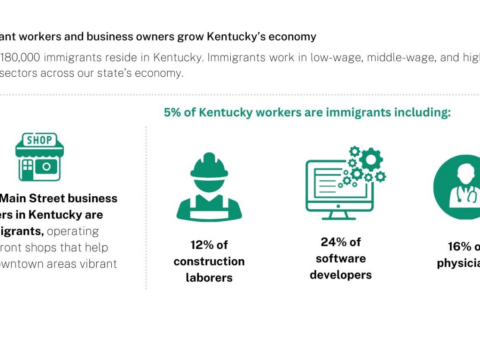As the Commonwealth continues to gain distance from the Great Recession, a new report, The State of Working Kentucky 2016, shows a mixed story of progress for workers in recent years.
The report, by the Kentucky Center for Economic Policy (KCEP), notes the state’s unemployment rate has fallen below pre-recession levels while workers experienced real wage growth from the top to bottom in 2015 for the first time in 15 years, both good signs for Kentucky workers. But it also shows the positives are regionally centralized, with parts of the state facing major economic challenges and Kentucky as a whole still far short of the near full employment experienced back in 2000.
“The overall picture continues to brighten,” said Anna Baumann, primary author of the report. “But the devil is in the details. Areas of concern include the large number of jobless workers not officially counted in the unemployment rate, poor job quality in some industries that are growing, and the ways economic changes hit some groups and regions of the state harder than others.”
The data show continued labor market challenges for Kentuckians in 2016:
- Population has grown nearly twice as fast as job growth since 2007 (5.1 percent compared to 2.6 percent), meaning Kentucky is an estimated 47,400 jobs short of pre-recession employment levels once population is factored in.
- If the same share of Kentucky’s prime-age population (25 to 54) was working today as in 2000, 118,000 more people would be employed. The state’s labor participation force is third from the bottom, above only West Virginia and Mississippi, as parts of the state face a continued lack of job opportunities.
- The industry with the most growth since the recovery began (32,900 jobs since June of 2009) is temporary or employment service jobs, which pay low wages and lack security. Other industries with strong job growth include a mix of job quality in industries like auto manufacturing, restaurants and health care.
- Younger workers, those with less education, African American and Hispanic workers continue to face especially high rates of underemployment.
- Only 25 of Kentucky’s 120 counties had more people employed in June 2016 than June 2007, almost all in the “Golden Triangle” between Louisville, Lexington and Northern Kentucky. Many eastern Kentucky counties, on the other hand, have seen big drops in employment.
“We can only say our economy is truly improving when job opportunities, wages and working conditions across the board are getting better,” said Jason Bailey, executive director of KCEP. “There are policies we should be pursuing that can lead to more progress, including a higher minimum wage, better college affordability, and more public investments in our economy and our communities that put people back to work and allow wages to keep rising.”
The full report can be found here.

